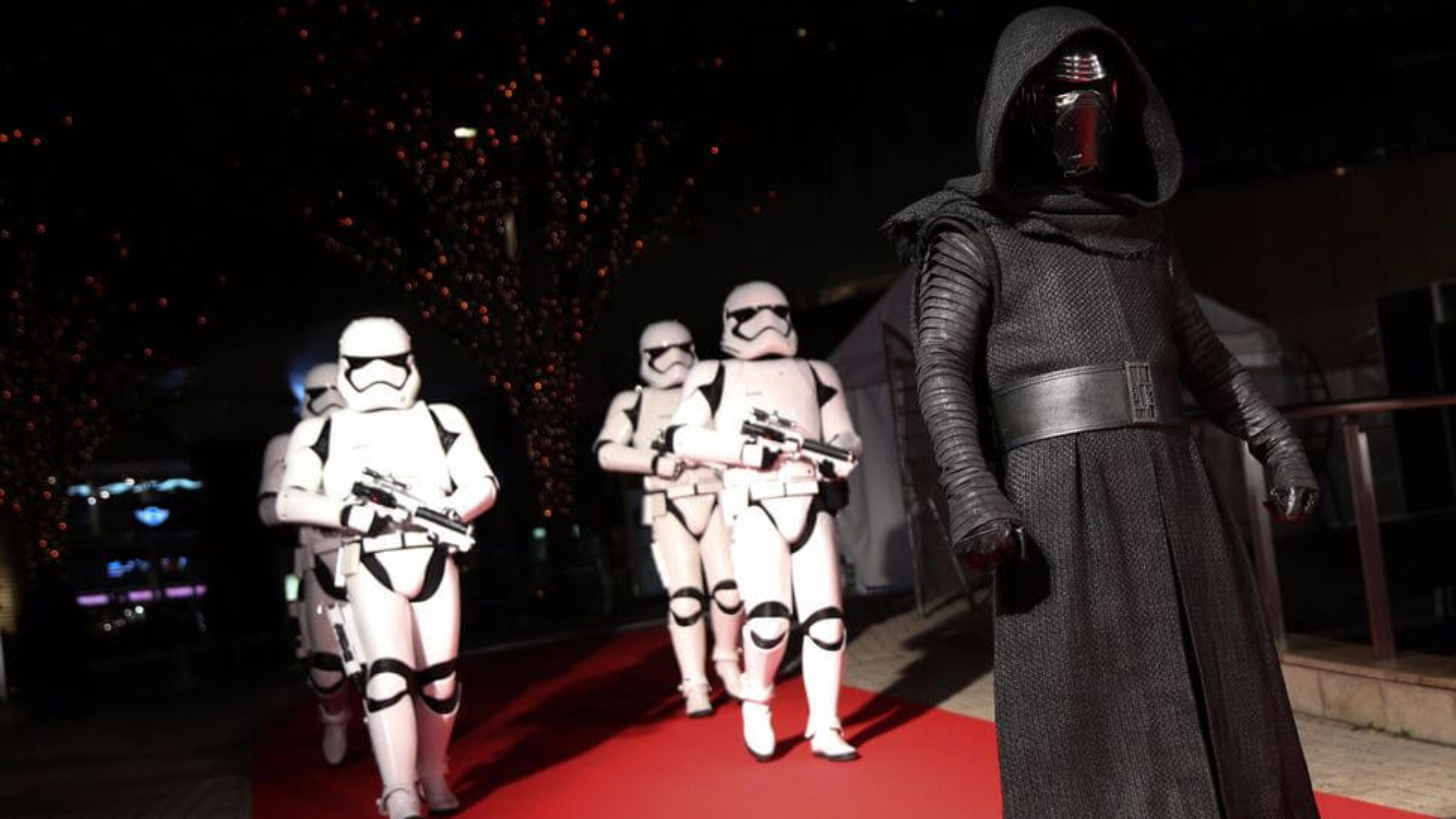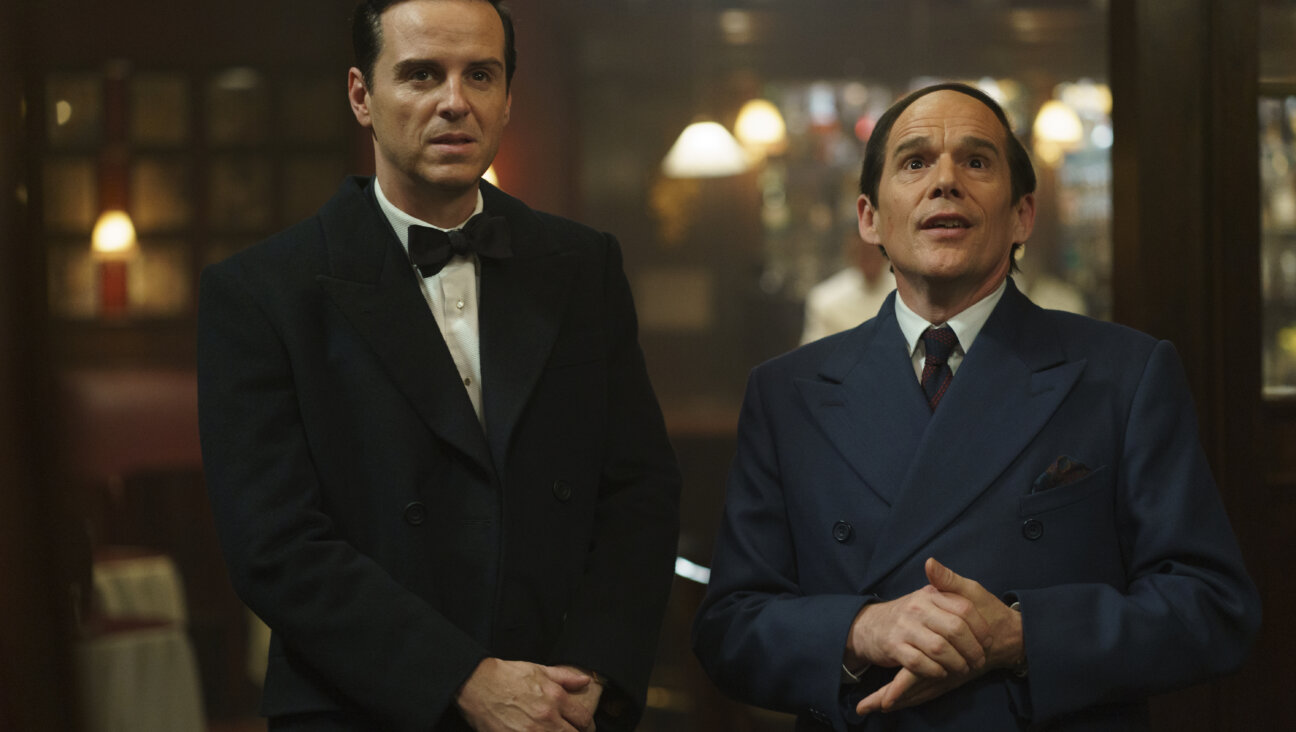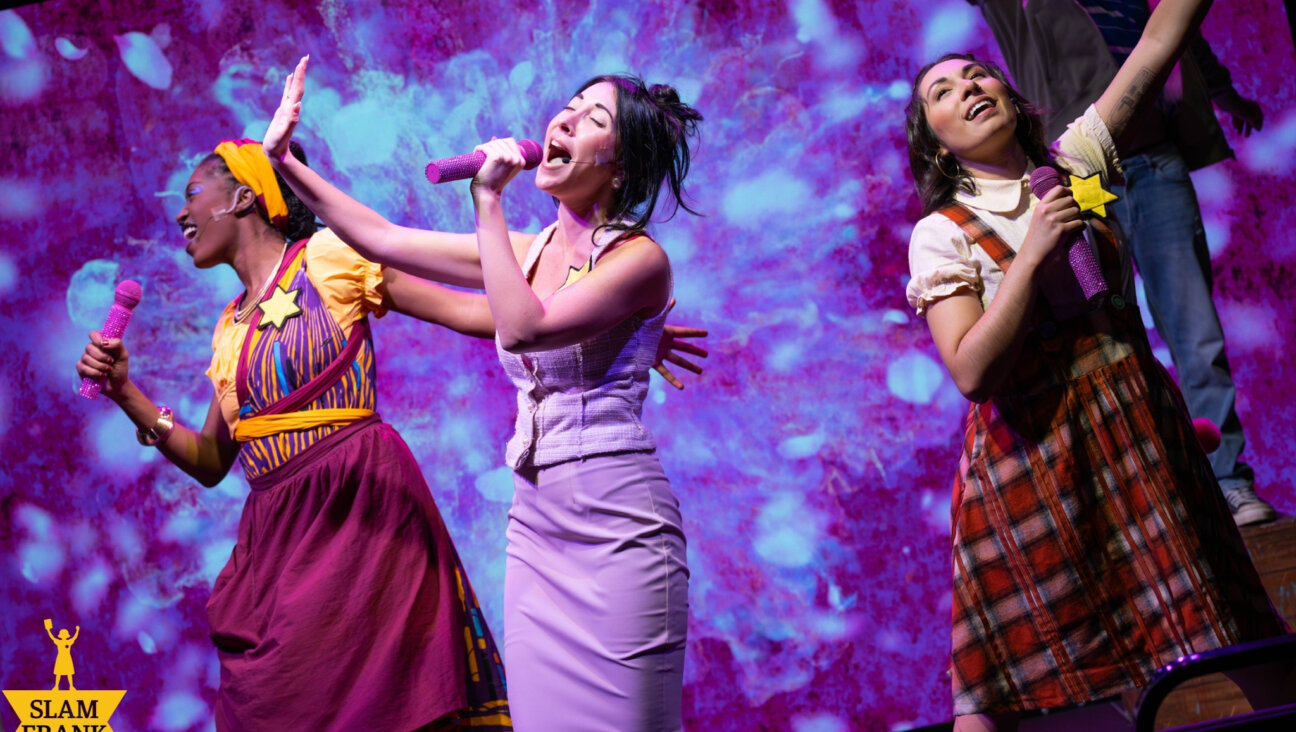‘Star Wars’ is influenced by the Nazis — and it fails to hold them accountable

Photo by Christopher Jue/Getty Images
Sign up for Forwarding the News, our essential morning briefing with trusted, nonpartisan news and analysis, curated by senior writer Benyamin Cohen.
A long time ago, in a galaxy far, far away, there were lots of Nazis. But no Jews.
The Empire in the “Star Wars” franchise, the totalitarian regime which serves as the antagonist throughout the series, is modeled on the Nazis both visually and throughout the films’ narratives. References to fascist totalitarianism give the genocidal Empire much of its evil oomph: You know the bad guys are bad because Nazis are evil, and the villains here look like Nazis.
Yet while Nazi-inspired aesthetics and plots provide “Star Wars” with a convenient shorthand for “evil,” the ideological core of Nazism’s evil is missing. The Empire showcases a version of Nazism motivated neither by anti-Semitism or prejudice against the marginalized. “Let the hate flow through you!” the Emperor tells conflicted hero Luke Skywalker, in “Return of the Jedi” (1983). But it’s a generalized, non-specific hate. It’s not directed at anyone in particular — and certainly not at Jews.
The Empire’s evil army of Stormtroopers is a direct reference to Nazi Stormtroopers, while the streamlined Imperial military uniforms reference German Nazi dress. According to costume designer John Mollo, Lucas wanted the Empire soldiers to look “efficient, totalitarian, fascist.” The Death Star, with its ability to carry out mechanized, instantaneous genocide, is able to execute a pulpy, futuristic kind of Holocaust. Obi Wan Kenobi’s famous exclamation in “Star Wars: A New Hope” (1977) following the destruction of the planet Alderaan, “I felt a great disturbance in the Force, as if millions of voices suddenly cried out in terror and were suddenly silenced,” resonates in part because of our knowledge of the twentieth century’s mass killings, the Holocaust foremost among them.
The Nazis and the Holocaust continue to be touchstones through later “Star Wars” films as well. In “Attack of the Clones” (2002), a eugenically perfected clone army marches in square formations that recall Leni Riefenstahl’s Nazi propaganda film “Triumph of the Will.” In “Rogue One” (2017), Cassian Andor (Diego Luna) of the Rebellion tries to justify lying to Jyn Erso (Felicity Jones), with whom he fights in the rebellion. “I had orders! Orders that I disobeyed,” he snaps. “Orders? You might as well be a Stormtrooper!” Jyn responds. Nazi officials tried to argue at the Nuremberg Trials that they were “just following orders.” Given that Jyn mentions Stormtroopers at the same time she criticizes Cassian’s explanation, the evocation of Nuremberg is almost certainly deliberate.
The opening sequence of “Rogue One,” in which Jyn’s farming family is visited by a dandyish Imperial official and his brutal thugs, strongly recalls the opening of Quentin Tarantino’s “Inglorious Basterds,” in which a farming family hiding Jews is visited by a dandyish Nazi official and his imperial thugs. Jyn hides herself in a hole in the ground, just as the Jews in “Inglorious Basterds” were hidden beneath the floorboards. The echoes are the clear result of both films nodding to a long history of Holocaust film representations of Stormtroopers searching for Jews in hiding.
Perhaps even more disturbing is the fact that, in “Attack of the Clones,” Anakin Skywalker’s vicious murder of a group of sand people, including bystanders, women, and children, replicates the logic and some of the rhetoric of genocide. Anakin (Hayden Christensen) and others refer to the sand people as “animals.” For humans, the sand people are subhuman murderers, which is also how Nazis framed Jews. The anti-Semitic “Nosferatu,” (1922) for example, presented a Jew as a caricatured vampire who preys on Christian women.
The sand people’s slaughter is supposed to serve as an important moment in Anakin’s plot arc as he transforms from a “good guy” to an evil tool of the Nazi-like Empire. Yet ”Attack of the Clones” evades the moral issues at stake. Princess Padme is mildly disturbed that Anakin is a mass murderer, but she mutters something about how anger is natural and unfortunate, and then the plot lumbers on. Sure, the film posits, dehumanization of other sentient creatures and genocide may have something to do with evil — but let’s not think about it too hard.
At times, the “Star Wars” films disconnect Nazism from evil altogether. Lucas famously lifted the heroic Rebellion’s awards ceremony, at the end of “A New Hope” from ”Triumph of the Will.” One could argue that Lucas is complicating the morality of the movie by suggesting that the Rebellion is tainted with evil as well. But there’s nothing in the narrative that supports that reading. Instead, “Triumph of the Will” is alluded to simply because its visuals are grand and impressive. Nazis are used to make the Empire more evil, and they’re used to make the Rebellion look cool.
The “Star Wars” franchise isn’t alone in separating Nazi ideas and tropes from the specifics of the Holocaust. The villain Khan in the “Star Trek” series preaches eugenics. Given the wide association of Nazis with eugenics, the ideological origins of Khan’s character are made implicitly clear. The Marvel Cinematic Universe’s Hydra was invented in Marvel comics as a super-secret organization that could act as a stand in for the Nazis, with the catchphrase “Hail Hydra!” substituted for “Heil Hitler.” The recent movie “Wonder Woman,” starts out with Captain Steve Trevor getting shot down on Paradise Island by Germans. The original Wonder Woman comics were set in World War II; filmgoers familiar with them won’t immediately realize that in the film, the soldiers pursuing Trevor are World War I soldiers rather than Nazis. The film blurs the moral landscapes of World War I and II; its antagonist, Dr. Poison, is an evil German scientist, and one scene shows innocent victims being locked in a room and killed by poison gas, referencing the Nazi’s concentration camps.
In many action films, the villains linked to Nazis aren’t explicitly racist or anti-Semitic. They commit violence by blowing things up in exciting ways, rather than by specifically targeting marginalized people. You never see the slog of daily violence that the Nazis in fact employed. The Empire in “Star Wars” uses the Nazis, but it doesn’t really think about the Nazis. That perhaps helps explain why, despite Nazis serving as the benchmark for evil on Cineplex screen after Cineplex screen, we have so much difficulty identifying them in real life.















